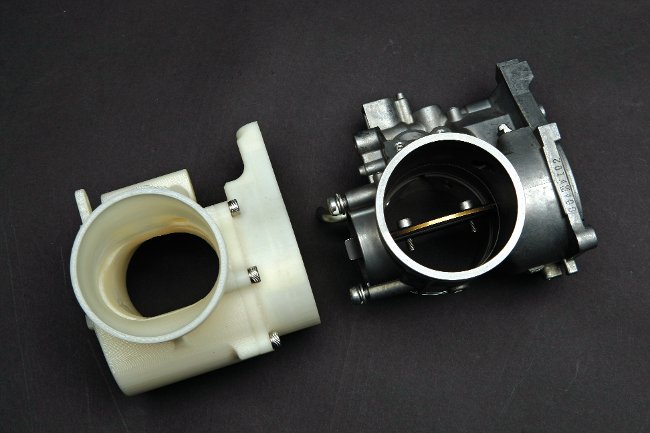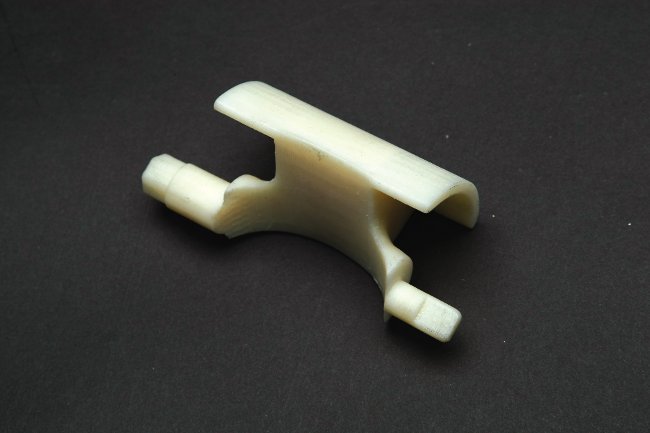FUTURE TECH: R&D’S INGENIUS THROTTLE BODY PROTOTYPE MIGHT ELIMINATE BUTTERFLIES

No butterfly means absolutely no obstruction to the airflow at 100 percent throttle opening.
Given the fact that most motocross bikes use almost identical fuel-injection throttle bodies, it is surprising to learn that there are many different designs being used in the rest of the motorsports world. Ever since the development of the Bendix Electrojet for the 1957 Rambler Rebel, the throttle body has been the object of inventor attention.
On fuel-injected engines, the throttle body is the part of the air intake system that controls the amount of air flowing into the engine. The throttle body is located between the air filter and the intake manifold. It is controlled by a butterfly valve. (A butterfly valve is a disk that opens and closes the venturi of the throttle body’s bore.)
Butterfly valves are cheap to produce and lightweight, but they aren’t aerodynamic. Whether the throttle is open or closed, the disc is always present in the airflow. Its interference creates a pressure drop. Because of this, inventors have been working overtime to come up with ways to get the butterfly valve out of the picture.
Dean Dickenson of R&D is the guru of carburetors. Dean worked for years perfecting the once-ubiquitous Keihin FCR carburetor with his Power Pump, Power Bowl, Flex-Jet and Power Spring. Dean has an intimate understanding of the problems associated with fuel delivery. With motocross bikes switching to fuel injection, Dean has now focused his attention on the EFI throttle body.

The “rotating gate” only contacts the housing when fully closed. This means low friction.
SPY PHOTOS OF THE FUTURE
After months of tinkering, Dean is close to finishing his prototype R&D throttle body, and MXA got a peek at Dean’s stereolithographic liquid polymer plastic test part. Built from a 3D CAD design, the all-plastic throttle body shows exactly what the finished throttle body will look like. This is Dean Dickenson’s first step before building a working model on a five-axis CNC machine.
The overall size and shape of R&D’s throttle body is almost identical to the Keihin unit, but the inner workings are significantly different from any throttle body on the market today. Dean drop-kicked the pesky butterfly design, because no matter what the throttle position, the butterfly always created turbulent airflow.
Dean considered going back to the tried-and-true slide design of the old carburetors (as used in the Simon Smart Body throttle body), but felt that even the slide could be improved.

R&D wanted simplicity. There are only three major components.
Dean’s stroke of genius was to design a rotating gate design. What is a rotating gate? Instead of a flat slide that is pulled vertically out of the venturi, a rotating gate is an elliptical barrier that rotates into a slot beneath the bore when opened. The elliptical shape guarantees that the butterfly replacement rolls away with a smooth, shaped surface that disappears completely out of the way. It’s a simple, clever design that eliminates the obstruction of a butterfly and the drag of a slide.
As for the rest of R&D’s throttle body, it is taper-bored 1.5 degrees from one end to the other. The bore is round at both ends and oval in the middle. This oval shape allows for the fitment of the rotating gate and OEM components (like the throttle position sensor). When the rotating gate is closed, there is a bypass port for idle air, but it is complemented by an adjustable position stop for the rotating gate at fully closed and fully open.
No one knows how R&D’s innovative throttle body will work, but the theory is sound. What we do know is that if Dean’s FCR carb ideas had been incorporated in production carbs, there would have been no need for fuel injection on motocross bikes in the first place. Maybe Dean Dickenson’s rotating gate design will change the way EFI works.
For more info on R&D go to www.r1dean.com





Comments are closed.